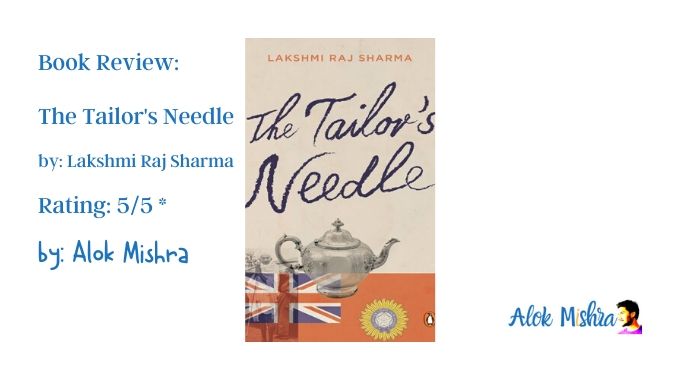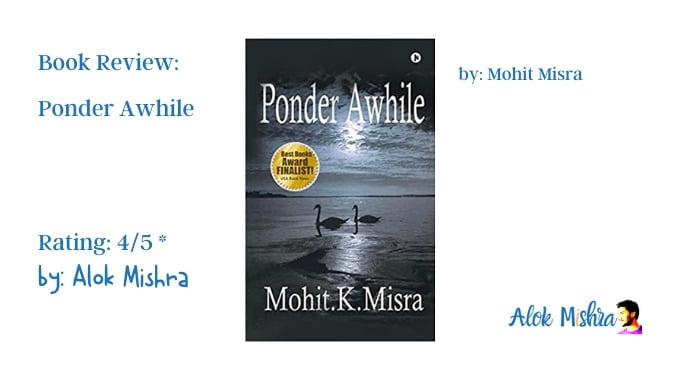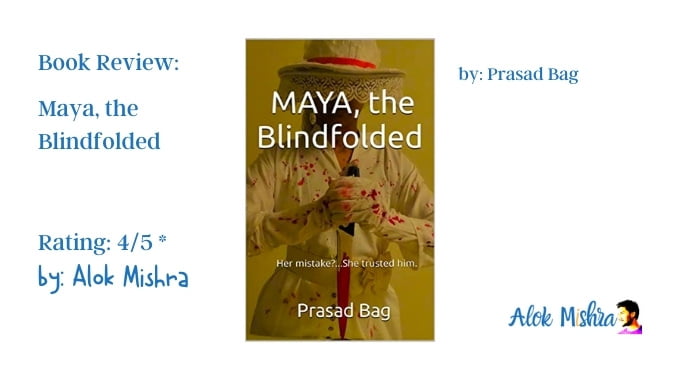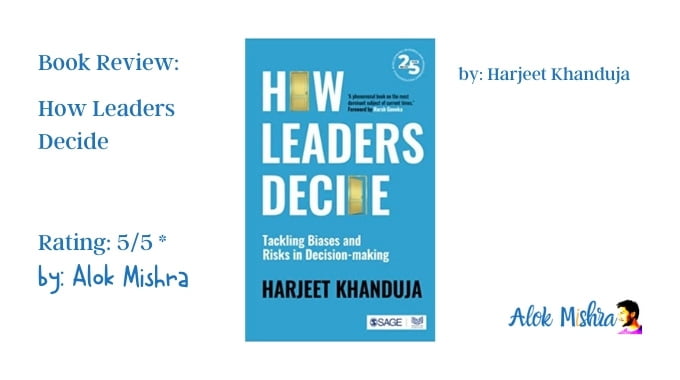Indian English poetry has been a very close subject to me. Right from the…
The Tailor’s Needle by Lakshmi Raj Sharma: Book Review
Novel: The Tailor’s Needle
Author: Lakshmi Raj Sharma
Publication: 2012, Penguin India (Indian Edition)
Number of Pages: 336
Genre: Raj Novel, Pre-Independence Novel
Style: Traditional

In the journey of Indian English literature, there have been many occasions when the best of the minds have created the best of the benchmarks for others (novelists and poets) to follow. However, it should be very clear that these benchmarks have been very few and those created these benchmarks have been very limited in number. Because most of my readers, on this blog and other platforms, are from a literary background, they will all agree with me that serious and meaningful novels, these days, have become rare. It was a usual practice in the days of Rao, Anand and Narayan but gradually faded with the likes of De and Bhagat entering the scene to the present day distortion. However, one has to admit that on occasions, there have been authors who have been contributing to the bracket of meaning literature by producing the novels that are not only sane, deep and purposeful but also interesting, exciting and pleasant to read. Today, I will be reviewing one such novel written by Professor Lakshmi Raj Sharma, Allahabad University English Literature Dept, The Tailor’s Needle which was published in the UK in 2009 and republished in India by Penguin India in 2012.
Central Idea:
The novel, The Tailor’s Needle, is primarily and apparently, is about an Indian family – Sir Saraswati Chandra Ranabakshi being the senior-most, the head and also the most traditional one with a certain influence of English and Western education. There are other members in the family with different attitudes but largely following the family head’s directions. Yogendra is the only son of Sir Saraswati and Savitri. Menaka and Sita are two daughters. Yogendra is obedient but a little perplexed about his inclinations towards the Western way of dressing and behaving. Sita is largely an Indian daughter with parents always right attitude. However, Menaka (mostly spelt Maneka), the elder daughter, is almost rebellious and she has her way of asserting her ideas. Menaka’s life has been a tragic experience for her and the family because of her love with an English man, the death of her husband and the trauma that she had been through. The spotlight of the narrative shifts from this Ranabakshi family, a staunch Brahmin family with certain English etiquettes, to a tale of two families – the getting together of Ranabakshi and the Vaish families in Dehradun. There the ideas come together, ego plays its part, pride comes in the way of philosophies and morals… a panorama of pre-independence India can be seen on the pages with a revolution on the street and evolution inside the house.
Style & Themes:
Outrightly, just after reading the first few chapters, a reader with a history of literary ventures can accumulate that Lakshmi Raj Sharma’s novel has been written in such a way that it suits the characters; it suits the time discussed; it is perfectly in a harmony with all the essential elements of a novel coming together and creating an overall impact on the readers. Sarcasm is fully evident on most of the occasions. The ‘Mortimer Edmund Griffin-Tiffin’ episode in the second chapter itself makes it amply clear what the readers are going to find inside. The novelist has ridiculed what needs to be ridiculed but in a sophisticated manner that does not offend the larger purpose of his novel. Moreover, other than being a realistic image of the time, early 20th-century and around, when the efforts of Indian independence was on its peak with Gandhi’s role coming to the fore, the novel also follows the traditional and essential qualities of Indian literature in English – showing how we have evolved from corruption to perfection, micro to macro, cynicism to pluralism, and it also captures the essence of Gandhian philosophy and its impact on the freedom movement across India with a long speech by the central character at the end of the novel.
The language and narrative have been what they had to be. Not very simple and casually giving away the meaning has been a trademark that I followed on most of the pages. The readers ought to employ their literary faculty in order to comprehend the allusions and the straightforward meanings (at times) as well. One more thing that I would like to bring to the notice of readers is the quality with which Prof. Sharma describes the events, emotions or artistry.
“The height of the palace ceiling was daunting. it enlarged the soul to see the adroitness and workmanship of man. The solid wooden doors had the most intricate carving and marvellous inlay work. The silk and satin curtains and the life-size portraits of maharajas added grandeur. The beautiful carpets seemed to have been brought from some other world.”
Concluding Remarks & Recommendations:
This is not a novel that you can read casually and forget. This is a novel that rather sticks in your thoughts and imagination for many weeks after having finished reading it. Honestly, after realising that the book has been written by someone who teaches English literature to the senior-most students, I did not expect anything lesser than what I found in The Tailor’s Needle. Prof. Sharma has done the job of creating fiction with value quotient and interest elements wonderfully. The murder or Maneka’s husband, Mohan, keeps the readers engaged with an experience of the thriller. At the same time, Sir Saraswati’s conundrum keeps the readers’ imaginations alive about how the India of the British Raj thought about certain dilemmas. Moreover, the love story of Gauri and Yogendra in Dehradun adds further colours to the plot and subsequently to the novel. In short, this is a full pack of cards with various shades and values.
The ideal readers for this novel should have patience because the ideas take time to unfold. It’s about the people of the time when their freedom was limited. It’s about the time when breaking the barriers and shackles of caste and class was considered a daunting step. So, if you are considering to read this novel, begin it with a certain degree of resolve to understand the ideas and the meanings attached to the storyline and then only you will have a complete sense of various themes that have been dealt with dexterity by Lakshmi Raj Sharma. Nevertheless, the readers of casual fiction written nowadays might not find quick-moving scenes and necessary ointment too much. However, they will certainly find an implicit murder mystery somehow. Therefore, my recommendation is for the readers who want to read serious, quality and literary fiction.
You can get a copy of the novel from Amazon India. The link to the book is below:
Buy the novel – click here for Amazon India Link
The Tailor's Needle by Lakshmi Raj Sharma
- Alok Mishra's Rating
5
Summary
The Tailor’s Needle by Lakshmi Raj Sharma is a novel about a certain Ranabakshi family in the British Raj era of India. It is about the dilemma of choosing the eternal Indian civilisation or conforming to the British ideas and education. It will be an interesting read for many readers who want to read Indian fiction with seriousness and hues of traditional qualities.
2.
The Tailor’s Needle by Lakshmi Raj Sharma: Book Review




This Post Has 0 Comments